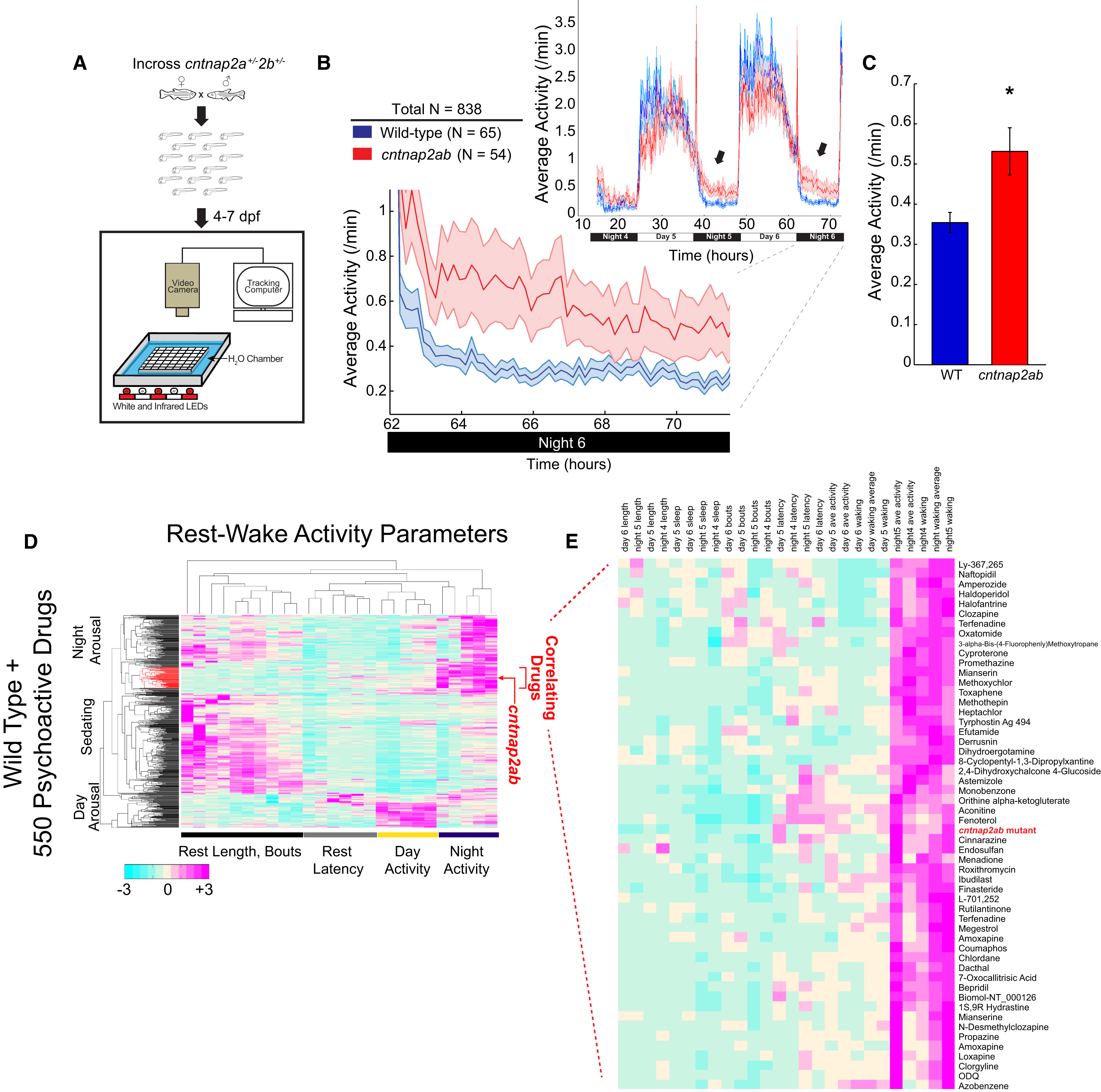Fig. 2
cntnap2ab Mutants Display Nighttime Hyperactivity
(A) Experimental setup (Prober et al., 2006 and Rihel et al., 2010).
(B) Locomotor activity of cntnap2aΔ25/Δ25cntnap2bΔ7/Δ7 (cntnap2ab, red) and wild-type (WT; blue) sibling-matched larvae over 72 hr. Hyperactivity in mutants worsens on successive nights (arrows). The magnified activity profile on night 6 is shown.
(C) Average locomotor activity of cntnap2ab versus wild-type. p = 0.00012 (one-way ANOVA, comparing all genotypes on all nights); p = 0.0193, 0.0236, and 0.0073, nights 4, 5, and 6, respectively.
(D) Hierarchical clustering of the cntnap2ab behavioral fingerprint (red arrow) compared with the fingerprints of wild-type larvae exposed to a panel of 550 psychoactive agents from 4–6 dpf ( Rihel et al., 2010). Each rectangle in the clustergram represents the Z score, or the average value in SDs relative to the behavioral profiles of wild-type exposed to DMSO alone (magenta, higher than DMSO; cyan, lower than DMSO). The cntnap2ab profile correlates with agents that induce nighttime arousal (“Correlating Drugs”).
(E) A magnified section of the clustergram, highlighting compounds that correlate with the cntnap2ab mutant behavioral fingerprint.
Image
Figure Caption
Figure Data
Acknowledgments
This image is the copyrighted work of the attributed author or publisher, and
ZFIN has permission only to display this image to its users.
Additional permissions should be obtained from the applicable author or publisher of the image.
Full text @ Neuron

